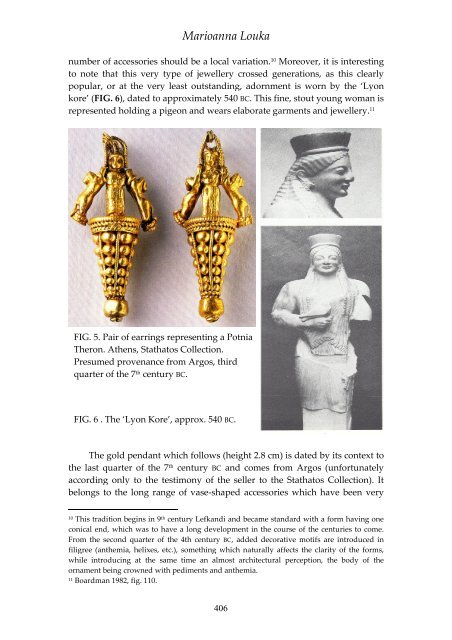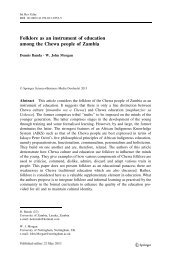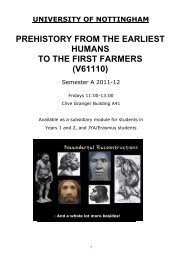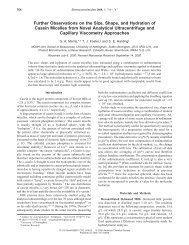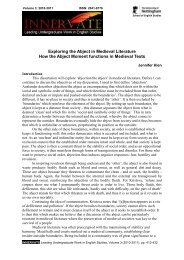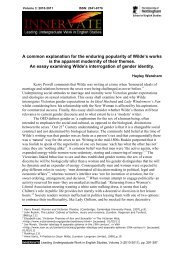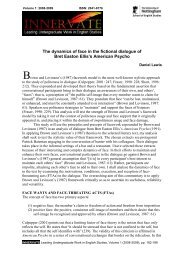Honouring the Dead in the Peloponnese - University of Nottingham
Honouring the Dead in the Peloponnese - University of Nottingham
Honouring the Dead in the Peloponnese - University of Nottingham
You also want an ePaper? Increase the reach of your titles
YUMPU automatically turns print PDFs into web optimized ePapers that Google loves.
Marioanna Louka<br />
number <strong>of</strong> accessories should be a local variation. 10 Moreover, it is <strong>in</strong>terest<strong>in</strong>g<br />
to note that this very type <strong>of</strong> jewellery crossed generations, as this clearly<br />
popular, or at <strong>the</strong> very least outstand<strong>in</strong>g, adornment is worn by <strong>the</strong> ‘Lyon<br />
kore’ (FIG. 6), dated to approximately 540 BC. This f<strong>in</strong>e, stout young woman is<br />
represented hold<strong>in</strong>g a pigeon and wears elaborate garments and jewellery. 11<br />
FIG. 5. Pair <strong>of</strong> earr<strong>in</strong>gs represent<strong>in</strong>g a Potnia<br />
Theron. A<strong>the</strong>ns, Stathatos Collection.<br />
Presumed provenance from Argos, third<br />
quarter <strong>of</strong> <strong>the</strong> 7 th century BC.<br />
FIG. 6 . The ‘Lyon Kore’, approx. 540 BC.<br />
The gold pendant which follows (height 2.8 cm) is dated by its context to<br />
<strong>the</strong> last quarter <strong>of</strong> <strong>the</strong> 7 th century BC and comes from Argos (unfortunately<br />
accord<strong>in</strong>g only to <strong>the</strong> testimony <strong>of</strong> <strong>the</strong> seller to <strong>the</strong> Stathatos Collection). It<br />
belongs to <strong>the</strong> long range <strong>of</strong> vase-shaped accessories which have been very<br />
10<br />
This tradition beg<strong>in</strong>s <strong>in</strong> 9 th century Lefkandi and became standard with a form hav<strong>in</strong>g one<br />
conical end, which was to have a long development <strong>in</strong> <strong>the</strong> course <strong>of</strong> <strong>the</strong> centuries to come.<br />
From <strong>the</strong> second quarter <strong>of</strong> <strong>the</strong> 4th century BC, added decorative motifs are <strong>in</strong>troduced <strong>in</strong><br />
filigree (an<strong>the</strong>mia, helixes, etc.), someth<strong>in</strong>g which naturally affects <strong>the</strong> clarity <strong>of</strong> <strong>the</strong> forms,<br />
while <strong>in</strong>troduc<strong>in</strong>g at <strong>the</strong> same time an almost architectural perception, <strong>the</strong> body <strong>of</strong> <strong>the</strong><br />
ornament be<strong>in</strong>g crowned with pediments and an<strong>the</strong>mia.<br />
11<br />
Boardman 1982, fig. 110.<br />
406


